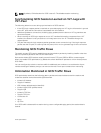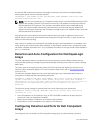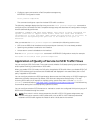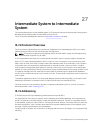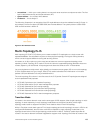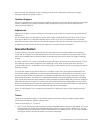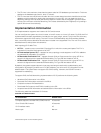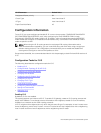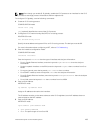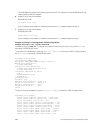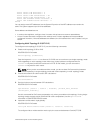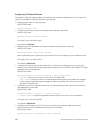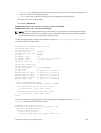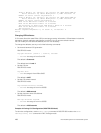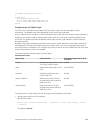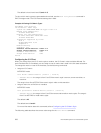
NOTE: Even though you enable IS-IS globally, enable the IS-IS process on an interface for the IS-IS
process to exchange protocol information and form adjacencies.
To configure IS-IS globally, use the following commands.
1. Create an IS-IS routing process.
CONFIGURATION mode
router isis [tag]
tag: (optional) identifies the name of the IS-IS process.
2. Configure an IS-IS network entity title (NET) for a routing process.
ROUTER ISIS mode
net network-entity-title
Specify the area address and system ID for an IS-IS routing process. The last byte must be 00.
For more information about configuring a NET, refer to IS-IS Addressing.
3. Enter the interface configuration mode.
CONFIGURATION mode
interface interface
Enter the keyword interface then the type of interface and slot/port information:
• For a 1-Gigabit Ethernet interface, enter the keyword GigabitEthernet then the slot/port
information.
• For the Loopback interface on the RPM, enter the keyword loopback then a number from 0 to
16383.
• For a port channel, enter the keywords port-channel then a number.
• For a SONET interface, enter the keyword sonet then the slot/port information.
• For a 10-Gigabit Ethernet interface, enter the keyword TenGigabitEthernet then the slot/port
information.
• For a VLAN, enter the keyword vlan then a number from 1 to 4094.
4. Enter an IPv4 Address.
INTERFACE mode
ip address ip-address mask
Assign an IP address and mask to the interface.
The IP address must be on the same subnet as other IS-IS neighbors, but the IP address does not
need to relate to the NET address.
5. Enter an IPv6 Address.
INTERFACE mode
ipv6 address ipv6-address mask
• ipv6 address: x:x:x:x::x
• mask: The prefix length is from 0 to 128.
Intermediate System to Intermediate System
493



